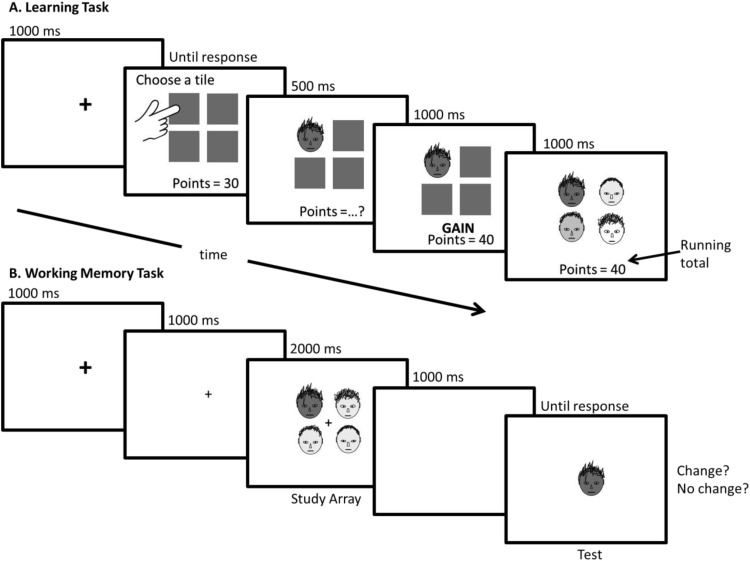Figure 1.
An illustration of a sample trial in the (A) value-learning task and (B) working memory (WM) task. Faces in both tasks were in fact gray-scale face photos of real people with transparent color overlays. The schematic hand shown here was not visible to participants. (A) For the learning task, four gray tiles were presented after a short fixation period. Participants chose a tile by pressing a corresponding key on the number pad. A tinted face immediately replaced the tile and a question mark replaced the running total. After 500 ms, “GAIN,” “LOSS,” or “NOTHING” (in green, red, or black, respectively) appeared and the running points total updated by +10, −10, or 0 points for win, loss, or no outcome, respectively. After 1000 ms, each remaining tile was replaced by a face with a unique tint and identity. (B) The WM task began with two successive fixation displays (each 1000 ms) showing a larger, then smaller, central cross. Then, a WM study array of four faces was presented (2000 ms), followed by a blank screen (1000 ms). All the faces in the WM array had the same color except one (singleton face). Finally, a single test face appeared centrally until the participant reported whether the identity of the test face matched one of the faces seen in the study array (no change trial) or not (change trial). The trial shown is a singleton no-change trial.

